Since its reveal, Ghostwire: Tokyo has been sort of a mystery. Developed by Tango Gameworks, horror adventure fans were presented with this ambitious title that featured first-person action with an open-world design. It’s an intimidating venture into this genre, but I feel like the team found a perfect balance of horror themes and action set pieces that make Ghostwire: Tokyo a must-play game of 2022.
Ghostwire: Tokyo introduces us to a very dead Akito who has just been revived by a wandering spirit named KK. To make matters worse, a mist has just befallen Tokyo, killing every human and ushering in a wave of Yokai. It’s straight out of a nightmare for Akito, who must quickly come to terms with the situation, so he doesn’t return to the afterlife.
The narrative has a few story beats, but my favorite is the relationship between Akito and KK. They are both strangers to the player and to each other, so every new story detail is revealed to the group as we figure it out together. The symbiotic relationship between these two also evolves as Akito searches for his sister and KK wraps up some unfinished business involving his research. Their goals require them to work together, but they don’t always see eye to eye. There are some real struggles here, but where Akito falls short in his understanding of this supernatural world, KK is there to keep the narrative going.
Throughout the game, other characters are introduced in a few unique ways. I was glad to see this developer continue to bend reality, which was one of the strongest themes of their previous games. As Akito gains confidence in himself, you begin to feel that same way, and then a curveball comes, and your back to sneaking around the streets hoping to avoid any enemies.
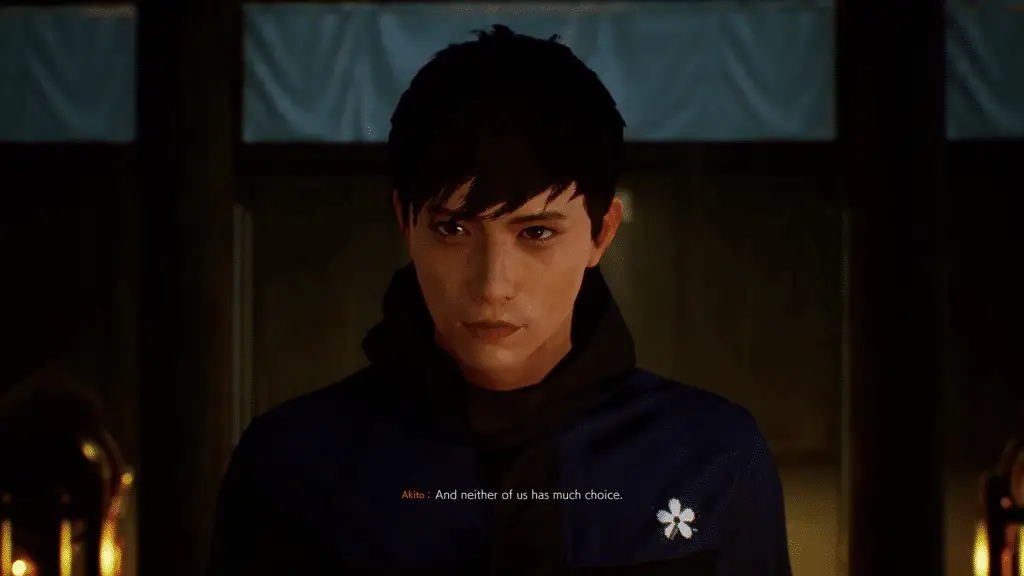
Tension is vital in any horror game, and Ghostwire: Tokyo provides some terrifying moments. I could attribute this to the limited ammo, health items taking a bit of time to consume, or the fast as hell yokai, but honestly, credit where credit is due, Tango Gameworks has created a beautiful game. The environment seems to have been meticulously pieced together so that each district has a distinct look to it. Further, the dungeons are all pleasantly unique, making them fun to explore using a great lighting system.
However, I should note that although rooftop access is a thing, I found traveling by rooftops to be rather dull. Still, you have to go up to the top for collectibles and some missions. The game doesn’t force you to travel by rooftop, but it’s definitely less scary, and there are secret lost souls around that will distract you as you try to figure out how to access them.
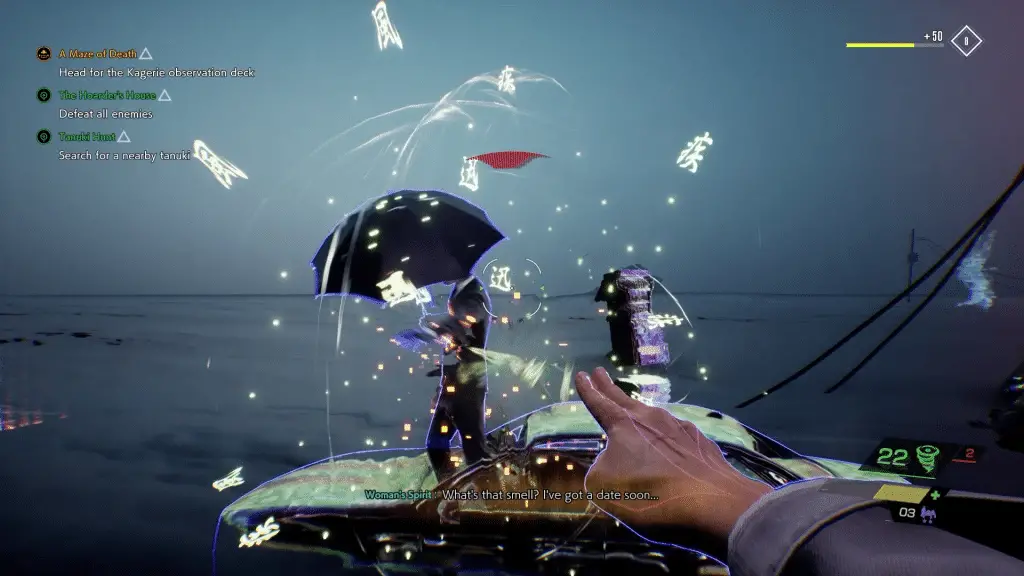
Ghostwire: Tokyo has some intricate features that make most encounters thrilling when it comes to combat. Once you get to Chapter 3, the game assumes you know how to handle yourself, and that’s ultimately when the fights become increasingly more interesting. The yokai get stronger as they pressure you to make quick decisions. Similar to a horror movie where someone drops the keys while they’re trying to unlock a door, the encounters are so intense that you stumble over your next moves.
Enemy design is crucial, and there’s a decent variety. The idea is to remove or destroy the yokai’s core. There are several ways to do this, but the quickest method of using a lasso or breaking it with your hand leaves you open to attack, which should always be considered. The yokai aren’t the most intelligent AI I’ve seen, but they’re relentless. There are also boss-type yokai and a group of strange beings that you’ll have to face off against throughout the adventure. The antagonist here has no sympathy for human life, which adds to his menacing presence.
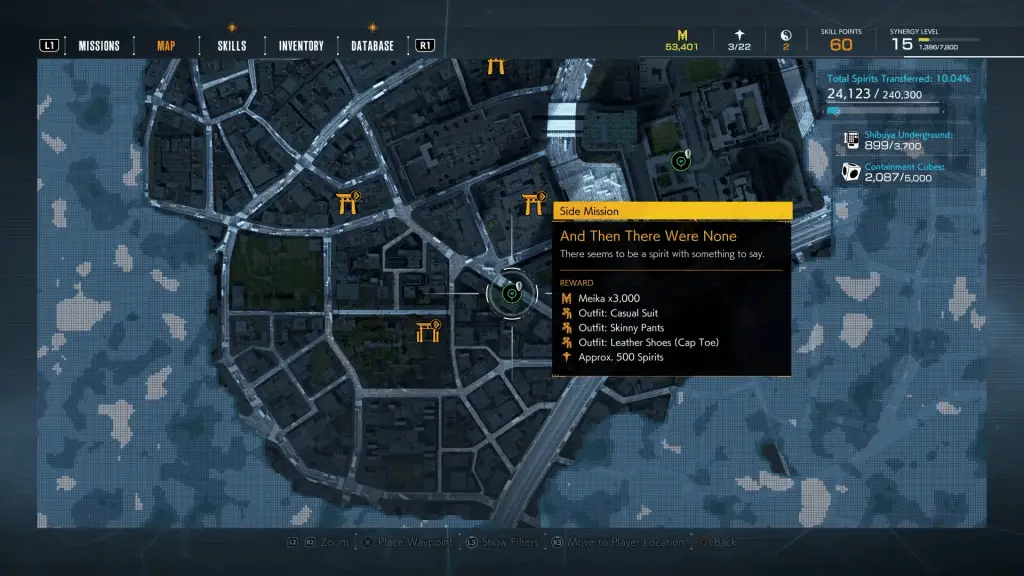
Controls take some getting used to as you master the elemental attacks and the limits of KK’s powers, but it does become easier to navigate. I attribute this to how the game feels like it’s been built around the DuelSense controller. The speaker, haptic feedback in the triggers, and the touchpad are all utilized in ways I wasn’t necessarily used to. However, it didn’t feel gimmicky either. Instead, it all just felt natural.
After gaining experience, new skills are unlocked, but I found that unlocking the skills that improve the timing of defeating Yokai or collecting spirits are the most important as there are a few too many “Hold Down L2” prompts in this game. Other skills improve your elemental attacks, and there are other equipable items to improve Akito’s new yokai killing hobby.
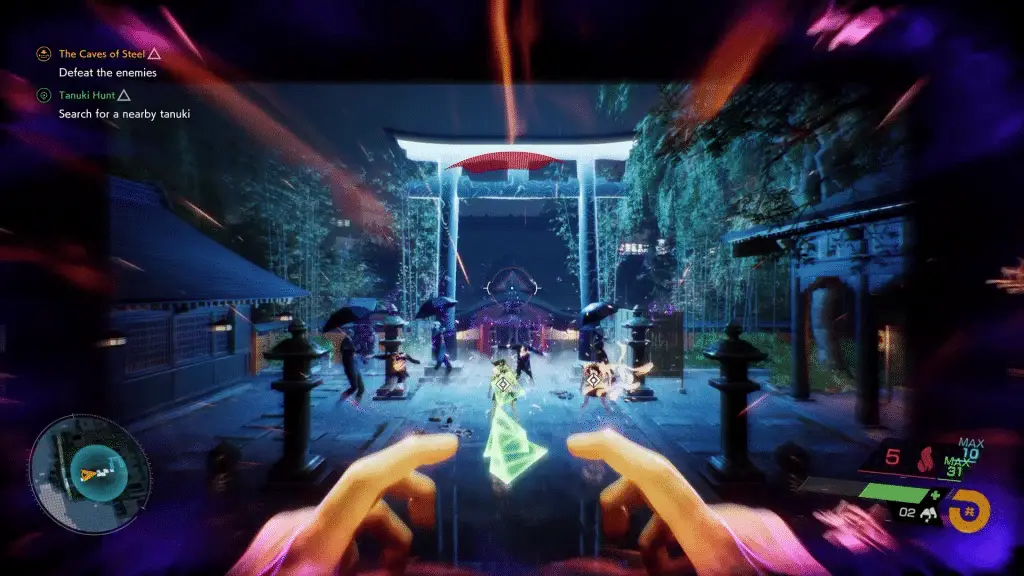
There are moments in gameplay where the rules will change as restraints are placed on Akito’s access to KK’s true skills. However, that only limits the monotony that some open-world games can instill in players. Side missions riddle the streets that take players to some unique dungeons or open the world up just a little more with further understanding of this yokai-ridden world. Everything is paid forward with souls that can be turned into money and experience.
The sound design seemed to be an essential factor for this team because it was perfect in this game. Wearing a nice pair of headphones will make you feel like you’re in the streets with Akito. However, I was annoyed by the constant squawking of these Tengu birds flying around, which can be hooked onto to get to higher areas. Regardless, the visuals and sound come together to provide a truly cinematic experience in this nightmarish world.
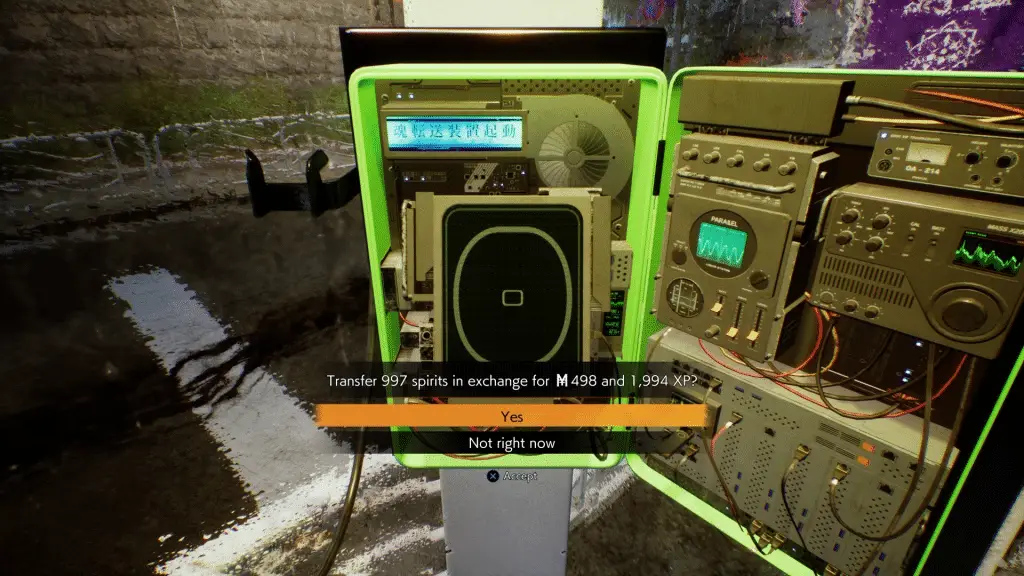
Ghostwire: Tokyo blurs the line between the first-person shooter and horror genres. It blends the two so naturally with the help of excellent level design, interesting characters, clever mission types, and some tense action. I had a great time exorcizing the streets of Tokyo. There are some growing pains in the opening chapters, but this game opens up in some bold ways that will keep you engaged until the final yokai is vanquished.